Homepage / News Details
Chlorination disinfection
- Categroy:News
- Author:
- Origin:
- Release Time:2023-01-31 15:45
- Views:
【Summary】The amount of disinfectant required varies according to the water source and water quality. Generally, 0.5mg to 4.5mg of effective chlorine is required per liter of water. Under normal circumstances, the amount of disinfectant used in surface water is larger than that in underground water...
Chlorination disinfection
【Summary】The amount of disinfectant required varies according to the water source and water quality. Generally, 0.5mg to 4.5mg of effective chlorine is required per liter of water. Under normal circumstances, the amount of disinfectant used in surface water is larger than that in underground water...
- Categroy:News
- Author:
- Origin:
- Release Time:2023-01-31 15:45
- Views:

The amount of disinfectant required varies according to the water source and water quality. Generally, 0.5mg to 4.5mg of effective chlorine is required per liter of water. Under normal circumstances, the amount of disinfectant used in surface water is larger than that in underground water, shallow well water is larger than that in deep well water, and the amount of disinfectant used before purification is larger than that after purification. Generally, post-filtration disinfection method is used, that is, after precipitation filtration and other purification treatment, disinfectant is added. Chlorine filler or slow release chlorine filler device can be used, or the method of adding chlorine into the clear pool, reservoir or water container before water supply can be used, that is, the amount of chlorine added can be calculated according to the amount of water and the effective chlorine content of the disinfectant, and then the disinfectant is dissolved into the water, and the water is supplied after 30 minutes of full mixing.
For schools that draw water directly from Wells because of limited conditions or good water quality without setting up facilities for precipitation, filtration, and storage, the disinfection method of directly injecting medicine into Wells or reservoirs can also be used. One method is to calculate the water quantity of the well according to the water depth and well diameter, or the water capacity of the pool, every morning and afternoon before using water, add disinfectant into the well or pool, shake it with a clean bucket or bamboo pole several times, and use it 30 minutes later; The other method is to put disinfectant in a container with holes (bamboo tube, plastic bottle, ceramic pot, etc.) under the water surface of the well or pool, so that the chlorine in the container constantly seepage and contact with the water, to achieve continuous disinfection effect.
Note: When using bleach powder for disinfection, the effective chlorine content should be measured for each batch of bleach powder purchased, as the effective chlorine in the bleach powder is volatile. During disinfection, the container containing bleach powder should be immersed about 40cm below the surface of the pool or well water, so that the chlorine liquid in the container constantly oozes out and comes into contact with the water, so that excessive effective chlorine is often kept in the water for disinfection, so as to achieve continuous disinfection effect. Generally about a week to take out the container to check and exchange drugs.
The above chlorination disinfection methods require frequent determination of free residual chlorine content in water to adjust the amount of chlorine added to ensure that after 30 minutes of contact between disinfectant and water, the residual chlorine content in water is maintained at 0.3~0.5mg/L, and the residual chlorine in the end water of pipe network is guaranteed to be ≥0.05 mg/L at any time.
Releate News

Time of issue : 2024-05-08 13:15:35

Time of issue : 2024-04-29 13:33:08

Time of issue : 2024-04-22 08:56:03
CONTACT US
PRODUCTS
CALCIUM HYPOCHLORITE
TCCA
SDIC
BCDMH
FEEDBACK
© 1999-2018 北京网站建设有限公司 Copyright © 2012-2022 All Rights Reserved Powered by www.300.cn 冀ICP备12012949号 津公网安备 12010302002173号 Seo tag

